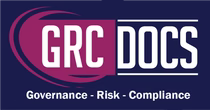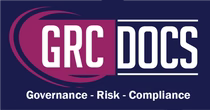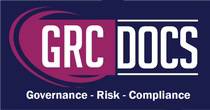A Deep Dive into NIST Cybersecurity Framework (CSF) 2.0
Overview
In today's digital era, cybersecurity has become a top priority for organizations worldwide. The National Institute of Standards and Technology (NIST) Cybersecurity Framework (CSF) stands as a beacon of guidance, providing organizations with a structured approach to managing cybersecurity supply chain risks. With the release of NIST Cybersecurity Framework 2.0, organizations have an updated and enhanced framework to navigate the ever-evolving cyber threat landscape.

Evolution Of The NIST Cybersecurity Framework: Origins And Development Of Version 2.0
The NIST Cybersecurity Framework (CSF) 2.0 has its roots in the original framework developed in response to an executive order from President Barack Obama in 2013. This order directed the National Institute of Standards and Technology (NIST) to create a voluntary framework to improve critical infrastructure cybersecurity. The resulting framework, released in 2014, aimed to provide organizations across all sectors with a common language and approach to reducing cybersecurity risk. The Cybersecurity Framework is a flexible, voluntary guide designed to help organizations of all sizes understand, manage, and reduce cybersecurity risk. It centers around five core functions: Identify, Protect, Detect, Respond, and Recover. The CSF is especially popular because it’s adaptable and can be tailored to fit different industries, making it a go-to option beyond just the public sector.
Building upon the success and feedback received from the initial version, NIST initiated the development of version 2.0 to further enhance the framework's effectiveness and relevance in addressing evolving cyber threats and challenges. The origins of the NIST CSF 2.0 lie in the ongoing collaboration between industry stakeholders, government agencies, and cybersecurity experts to refine and update the framework based on lessons learned, emerging best practices, and technological advancements.
The development of version 2.0 involved extensive engagement with stakeholders through workshops, public comment periods, and collaboration with industry and government partners. NIST also conducted research and analysis to identify areas for improvement and enhancement in response to evolving cybersecurity threats, regulatory requirements, and industry needs. The result of this collaborative effort is the NIST CSF 2.0, an updated and refined framework that builds upon the foundation of the original version while incorporating new insights, tools, and guidance to help organizations better reduce cybersecurity risks in today's dynamic and rapidly evolving threat landscape.

Key Components of NIST Cybersecurity Framework 2.0
NIST CSF 2.0 builds upon the foundation established by its predecessor, introducing key enhancements and refinements to better address the evolving cybersecurity landscape. Some of the key components of NIST CSF 2.0 include:
1. Expanded Categories and Subcategories
NIST CSF 2.0 features expanded categories and subcategories to provide organizations with a more comprehensive framework for assessing and addressing cybersecurity risks. These additions reflect the changing threat landscape and emerging cybersecurity challenges faced by organizations today.
2. Updated References to Industry Standards
NIST CSF 2.0 incorporates updated references to industry standards and best practices, ensuring alignment with the latest developments in cybersecurity. By referencing widely recognized standards, NIST CSF 2.0 facilitates interoperability and harmonization with existing cybersecurity frameworks.
3. Enhanced Flexibility and Adaptability
One of the hallmarks of NIST CSF 2.0 is its enhanced flexibility and adaptability to accommodate the diverse needs and priorities of organizations across different sectors. The framework provides organizations with the flexibility to tailor their cybersecurity programs to suit their unique risk target profiles and business requirements.
Real-World Applications of NIST Cybersecurity Framework 2.0
Implementing NIST CSF 2.0 can yield numerous benefits for organizations seeking to enhance their cybersecurity posture. Some of the practical implications of NIST CSF 2.0 include:
1. Improved Risk Management
NIST CSF 2.0 provides organizations with a structured framework for identifying, assessing, and managing cybersecurity enterprise risks effectively. By adopting a risk-tolerance-based approach, organizations can prioritize their cybersecurity efforts and allocate resources more efficiently.
2. Enhanced Cybersecurity Resilience
NIST CSF 2.0 helps organizations build cybersecurity resilience by providing guidance on developing robust cybersecurity programs that can adapt to evolving threats. By implementing the framework's recommendations, organizations can better withstand cyber attacks and minimize their impact on business operations.
3. Regulatory Compliance
NIST CSF 2.0 aligns with various regulatory requirements and industry standards, making it a valuable tool for organizations seeking to achieve regulatory compliance. By following the framework's guidelines, organizations can demonstrate their commitment to cybersecurity best practices and regulatory requirements.
Integrating Governance and Enterprise Risk Management to Achieve Cybersecurity Outcomes under NIST CSF 2.0
-
Alignment with NIST CSF 2.0:
Focuses on achieving measurable and outcome-based cybersecurity results through structured governance and risk management. -
Govern Function:
-
Establishes leadership accountability for cybersecurity.
-
Defines roles, responsibilities, and policies that align security with business goals.
-
Ensures that cybersecurity is embedded into organizational decision-making.
-
-
Enterprise Risk Management (ERM) Integration:
-
Incorporates cybersecurity risks into the broader enterprise risk framework.
-
Promotes a unified view of organizational risks—financial, operational, and digital.
-
Supports consistent and data-driven prioritization of mitigation efforts.
-
-
Risk Understanding and Communication:
-
Encourages organizations to understand, assess, prioritize, and communicate risks effectively.
-
Enhances cross-departmental collaboration and awareness.
-
Ensures stakeholders are informed of potential impacts and mitigation strategies.
-
-
Reducing Risks and Achieving Outcomes:
-
Enables efficient resource allocation to protect critical assets.
-
Reduces the likelihood and impact of cybersecurity incidents.
-
Strengthens overall resilience and trust with customers, partners, and regulators.
-
-
Cultural and Strategic Benefits:
-
Promotes a culture of continuous improvement and shared accountability.
-
Aligns cybersecurity strategy with long-term enterprise objectives.
-
Builds confidence in the organization’s ability to manage evolving threats.
-
Best Practices for Implementing NIST Cybersecurity Framework 2.0
While NIST Cybersecurity Framework 2.0 offers a comprehensive framework for reducing cybersecurity risks, successful implementation requires careful planning and execution. Here are some best practices for organizations looking to implement NIST CSF 2.0 effectively:
1. Understand Organizational Context
Before implementing NIST CSF 2.0, organizations should conduct a thorough assessment of their cybersecurity posture, including their existing policies, processes, and controls. This will help organizations identify areas for improvement and prioritize their cybersecurity efforts accordingly.
2. Engage Stakeholders
Successful implementation of NIST CSF 2.0 requires collaboration and buy-in from stakeholders across the organization, including executive leadership, IT teams, legal and compliance teams, and third-party vendors. Engaging stakeholders early in the process can help ensure alignment with organizational goals and objectives.
3. Tailor the Framework
NIST CSF 2.0 is designed to be flexible and adaptable, allowing organizations to tailor the framework to suit their unique needs and priorities. Organizations should customize the framework's categories and subcategories to reflect their target risk profiles and business requirements.
4. Implement Controls and Mitigation Strategies
Based on the findings of their risk assessment, organizations should develop and implement cybersecurity controls and mitigation strategies to address identified risks. This may include measures such as access controls, data encryption, and security awareness training.
5. Monitor and Evaluate Performance
Continuous monitoring and evaluation are crucial for assessing the effectiveness of cybersecurity controls and uncovering areas that need enhancement. To support this, organizations should define clear metrics and key performance indicators (KPIs) to track progress over time. These insights enable data-driven decisions and support continuous improvement of cybersecurity programs, ensuring they evolve to meet changing threats and organizational needs.
Conclusion
NIST Cybersecurity Framework 2.0 represents a significant milestone in the ongoing effort to strengthen cybersecurity resilience and mitigate cyber threats. By providing organizations with an updated and enhanced framework for managing cybersecurity risks, NIST CSF 2.0 equips organizations with the tools and guidance they need to navigate the complex and ever-changing cybersecurity landscape. By understanding the key components, practical implications, and best practices for the implementation of NIST CSF 2.0, organizations can bolster their cybersecurity defenses and protect their most valuable assets from cyber threats.




